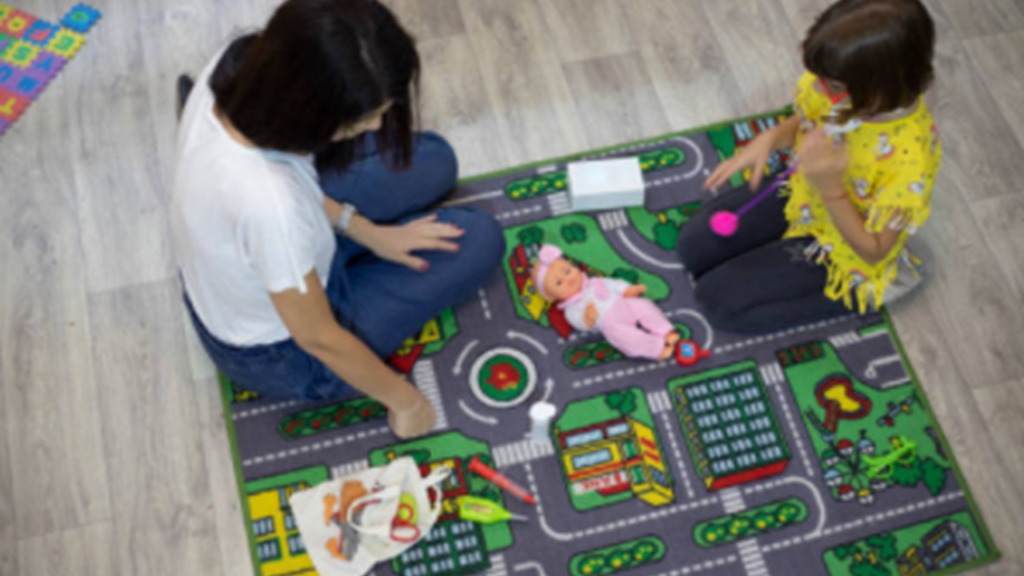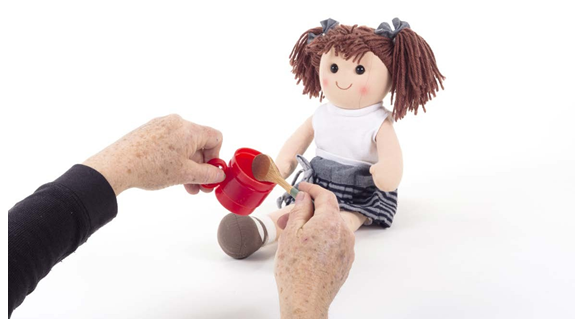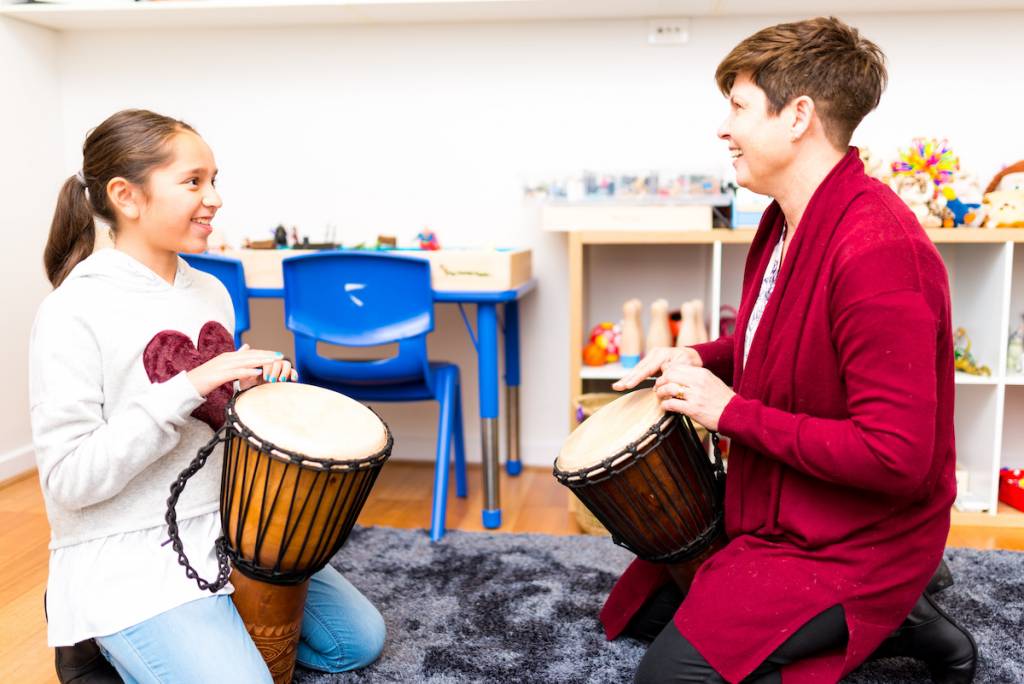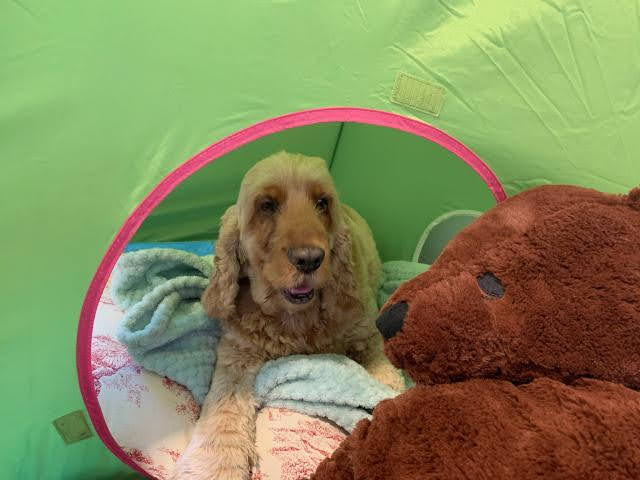What is Learn to Play Therapy?
Learn to Play Therapy is for children aged 18 months to 10 years who find playing with toys or objects difficult or they need help to be able to play with friends.
Pretend play is the focus of Learn to Play Therapy. The first session with your child is a pretend play assessment. The assessment helps us choose the play activities best suited to support your child when the play sessions begin.
From the second session, a range of play and pretend play activities will be used to engage your child and support their joyful participation in play.
Why is Learn to Play Therapy about pretend play?
Pretend play is a complex form of play that many children do not develop naturally. Pretend play is thinking play. Children are using their imagination to be creative in play.
Pretend play begins in the second year of life. You will see pretend play when a child pushes a truck and makes a ‘broom’ noise, or places a cup to the teddy’s face, or pretends to talk on a toy phone.

In pretend play children often play what they have seen or experienced in their lives, such as going shopping.
As children develop their ability in pretend play, you might also notice:
An increase in their social skills
For example, they might stop and watch children instead of pushing in, or they may begin to join in on the play of their siblings or friends instead of knocking everything over.
An increase in understanding emotions
In pretend play children build skills in pretending the teddy (or a special toy) is alive. They can explore emotions in teddy when he is alive. They start to develop the ability to take on a role (such as a shopkeeper) helping them to understand what that role does and how people in that role might speak.
Using more language
When children engage in pretend play, they use language, and in particular, they develop stories. You should notice an increase in your child talking throughout Learn to Play Therapy sessions.
Using different thinking strategies
As children develop in their pretend play skills, the therapist will begin to put problems in the play story. The child will be engaged in solving what to do.
Being happy to play
Playing brings a sense of happiness because it releases chemicals in the brain that give us a feeling of happiness. Also, learning how to pretend in play will help your child understand what other children are
doing in their play. This should reduce your child’s worry about playing with other children.

What happens in therapy sessions?
First and foremost, your child should feel safe in Learn to Play Therapy sessions. To do this your therapist will enjoy playing, use their eyes, their voice, and their movement in play to let your child know that the therapist enjoys playing with your child.
Your therapist may have a meet and greet session where they show you the play space/room. During the play assessment the therapist will be mainly observing your child. The therapist will also chat to you about your child’s interests, special toys, and your child’s history and any concerns you might have for their development.
During Learn to Play sessions, the therapist will be using techniques such as:
Modelling the play – the therapist will play with the toys. If you would like to join in the play, you would be most welcome.
Repetition with variation – you will notice that the therapist will stick to the one play activity for as long as your child is enjoying the play. This is an important part of therapy and it helps build your child’s understanding of the play.
Tracking the play – talking about the play
As your child plays, the therapist will be talking about the play as your child plays. Over time, your child should also be talking a lot in the play!
Challenging the child
This means the therapist will gradually introduce more complex pretend play into your child’s sessions. In the sessions, the therapist will be responding constantly to your child.
What do I do in the sessions?
Being a parent or career, you are the most important and supportive person in your child’s life. In the sessions you can be involved as much as you would like, within your comfort level. You can be on the floor playing with your child and therapist, or you may prefer to sit and watch. Your child will love you to play with them, when you are ready to play too.
Image and content source: Learn to Play




